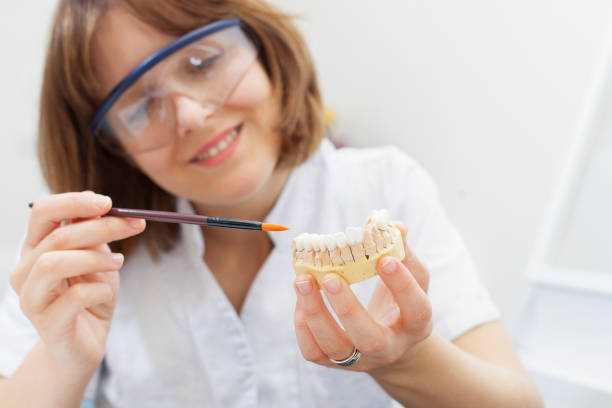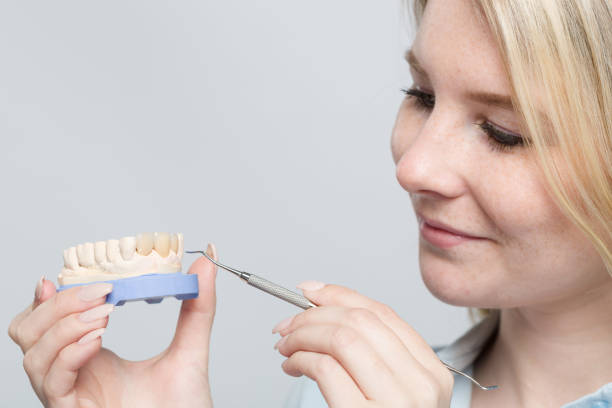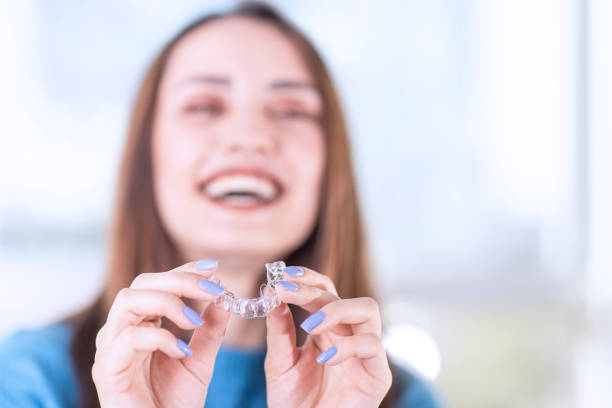Elastic dentures, which use elastic resin clasps, are located at the natural gingival margin, and have good simulation, so they have this reputation. Elastic resin is a new type of denture repair material that was introduced into China from the United States in 1995, and there is no exact scientific name. Its characteristics are high strength, suitable elasticity, good flexibility, and translucency. Its color is close to natural gingival tissue, and it has good bionic effect and good concealment.

The Nature of Elastic Dentures
The elastic clamping arm can use the soft tissue undercut to retain, and has a good retention effect, especially in the case of the abutment tooth crown being too short or the undercut being too small. It can better use the undercut and is not easy to fall off because the denture is stuck The ring is in surface contact with the tooth surface of the abutment and has much greater friction than the metal snap ring with only point-line contact.
The retainer made of elastic resin is designed on the neck of the tooth and the alveolar ridge below it to jointly bear the external force. Its elasticity and toughness can also buffer the chewing pressure of the edentulous area and exert a physiological massage effect. There is less damage to the abutment teeth, such as lateral stress. In addition, the elastic snap ring, the base, and the abutment are well sealed, and it is not easy to store food.
The advantage of elastic dentures
For clinically long crowns, exposed tooth roots, and tooth neck allergies caused by periodontal disease or wedge-shaped defects, the clasp of invisible dentures can form a prosthetic gingiva to cover the long neck of the abutment and improve the long crown. Restores the esthetics of patients with gingival recession in the anterior teeth, while reducing the sensitivity of the exposed neck of the tooth.

The scope of adaptation of elastic dentures
Elastic dentures are mainly suitable for simple restoration of a single or less than 3 anterior teeth. For multiple teeth and posterior teeth with loose ends, it is easy to cause mucosal tenderness. The retention force and stability are not enough and should not be used. A single missing posterior tooth can be selected, but a metal support must be added, which is difficult to operate in the laboratory. So, the best candidates for elastic dentures are people who are missing one to three front teeth and one back tooth.
Due to the way they are made and what they are made of, elastic dentures can't be fixed once they are broken. They are also easily bent and don't work well when chewing, so they need a base.

The functions of the denture base are:
(1) Connect all parts of the denture into a whole.
(2) Arrange artificial teeth on the base to bear, transmit, and disperse the force generated.
(3) Reconstruction of damaged alveolar bone, jaw bone, and soft tissue.
(4) Increase denture retention and stability. There is saliva between the base and the mucous membrane, and there is an adsorption force between them. The contact between the base and the abutment and adjacent teeth can form a force against the denture moving, and it also has an indirect retention effect that keeps the denture from tilting.
FlexSoft partial dentures are elastic, easy to shape, can be used to make the base of elastic dentures. They are suitable for partial and complete dentures,occlusal splints and nightguards.



